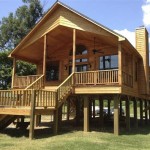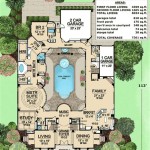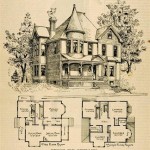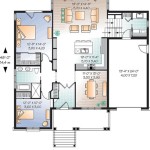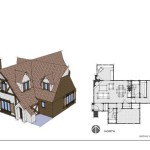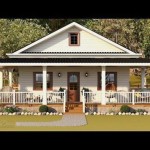Empty Nester House Plans are designed for individuals or couples who have raised their children and are now adjusting to an empty nest. These plans focus on creating living spaces that accommodate the needs and desires of this demographic, prioritizing comfort, functionality, and accessibility.
Empty nesters often seek homes that are smaller and more manageable than their previous family dwellings, with layouts that promote ease of movement and reduce maintenance requirements. They may also prioritize features such as one-level living, open floor plans, and accessible bathrooms to enhance their comfort and well-being.
In the following sections, we will explore various empty nester house plans, their key features, and the considerations that go into designing such homes to meet the unique needs of this growing segment of the population.
When planning an empty nester house, consider these key points:
- One-level living
- Open floor plans
- Accessible bathrooms
- Smart home features
- Energy efficiency
- Low maintenance
- Outdoor living spaces
- Flexible room usage
- Proximity to amenities
- Future-proofing
By incorporating these elements into your design, you can create a comfortable, functional, and enjoyable home that meets your needs now and in the years to come.
One-Level Living
One-level living is a popular choice for empty nesters, as it eliminates the need for stairs and makes it easier to move around the home. This type of floor plan typically includes all of the main living areas on a single level, including the bedrooms, bathrooms, kitchen, and living room. One-level homes are often more accessible for individuals with mobility issues, and they can also be more energy-efficient than multi-level homes.
There are a number of different one-level house plans available, so you can find one that fits your specific needs and preferences. Some popular options include ranch-style homes, bungalow homes, and cottage homes. Ranch-style homes are typically long and low, with a simple, rectangular shape. Bungalow homes are similar to ranch-style homes, but they often have a smaller footprint and a more compact design. Cottage homes are typically smaller than ranch-style homes and bungalows, and they often have a more charming, traditional look.
When choosing a one-level house plan, it is important to consider your future needs. If you think you may need additional space in the future, you may want to choose a plan that includes a bonus room or unfinished basement that can be finished later. You should also consider the location of the home. If you plan on aging in place, you may want to choose a home that is close to amenities such as grocery stores, pharmacies, and medical facilities.
One-level living can provide a number of benefits for empty nesters, including increased accessibility, convenience, and safety. If you are considering downsizing to a smaller home, a one-level house plan is a great option to consider.
Open Floor Plans
Open floor plans are another popular feature in empty nester house plans. Open floor plans create a more spacious and inviting atmosphere by eliminating walls between the kitchen, dining room, and living room. This type of floor plan is ideal for entertaining guests, as it allows for easy flow of conversation and movement between different areas of the home.
Open floor plans can also be more accessible for individuals with mobility issues, as they eliminate the need for doorways and hallways. They can also be more energy-efficient, as they allow for better air circulation and natural light penetration.
There are a number of different ways to create an open floor plan. One popular option is to use a great room design. Great rooms are large, open spaces that combine the living room, dining room, and kitchen into one area. Another option is to use a split-level design. Split-level homes have two levels that are connected by a short staircase. The upper level typically includes the living room and dining room, while the lower level includes the kitchen and family room.
When designing an open floor plan, it is important to consider the flow of traffic and the placement of furniture. You want to create a space that is both functional and inviting. You should also consider the amount of natural light that the space receives. If the space is too dark, it can feel cramped and unwelcoming.
Open floor plans can provide a number of benefits for empty nesters, including increased accessibility, flexibility, and energy efficiency. If you are considering downsizing to a smaller home, an open floor plan is a great option to consider.
Accessible bathrooms
Accessible bathrooms are an important consideration for empty nesters, especially those who have mobility issues or who may need assistance with bathing or toileting in the future. An accessible bathroom should be designed to be safe, comfortable, and easy to use for individuals of all abilities.
There are a number of different features that can be incorporated into an accessible bathroom design. These features include:
- Wider doorways: Wider doorways allow for easier access for wheelchairs and other mobility devices.
- Grab bars: Grab bars provide support and stability for individuals getting in and out of the bathtub or shower.
- Curbless showers: Curbless showers eliminate the need to step over a threshold, which can be difficult for individuals with mobility issues.
- Raised toilets: Raised toilets are easier to sit down on and stand up from for individuals with limited mobility.
- Handheld showerheads: Handheld showerheads provide greater flexibility and ease of use for individuals with limited mobility.
- Non-slip flooring: Non-slip flooring helps to prevent slips and falls.
In addition to these features, it is also important to consider the overall layout of the bathroom. The bathroom should be designed to allow for easy movement and access to all fixtures and features. For example, the toilet should be located close to the door, and the shower should be located close to the toilet.
Accessible bathrooms can provide a number of benefits for empty nesters, including increased safety, comfort, and independence. If you are considering downsizing to a smaller home, an accessible bathroom is a great option to consider.
Here are some additional tips for designing an accessible bathroom:
- Use contrasting colors for the walls, floor, and fixtures. This will help to create visual cues that make it easier for individuals with low vision to navigate the bathroom.
- Install lever handles on all faucets and doors. Lever handles are easier to use for individuals with limited dexterity.
- Provide adequate lighting in all areas of the bathroom. This will help to prevent slips and falls.
- Consider installing a medical alert system in the bathroom. This will allow individuals to call for help in case of an emergency.
By following these tips, you can create an accessible bathroom that is both safe and comfortable for everyone.
Smart home features
Smart home features can provide empty nesters with increased convenience, safety, and peace of mind. These features can be used to automate a variety of tasks, from controlling the lights and temperature to locking the doors and monitoring security cameras.
- Smart lighting: Smart lighting systems allow you to control the lights in your home from anywhere using a smartphone or tablet. This can be especially convenient for empty nesters who are away from home for extended periods of time. Smart lighting systems can also be used to create schedules and routines, such as turning on the lights when you wake up in the morning or turning them off when you go to bed.
- Smart thermostats: Smart thermostats allow you to control the temperature in your home from anywhere using a smartphone or tablet. This can be especially convenient for empty nesters who want to save energy and money on their utility bills. Smart thermostats can also be used to create schedules and routines, such as setting the temperature to a lower setting when you are away from home or raising the temperature before you get home from work.
- Smart locks: Smart locks allow you to lock and unlock your doors using a smartphone or tablet. This can be especially convenient for empty nesters who have difficulty using traditional keys. Smart locks can also be used to create schedules and routines, such as locking the doors automatically when you leave home or unlocking the doors when you arrive home.
- Smart security cameras: Smart security cameras allow you to monitor your home from anywhere using a smartphone or tablet. This can provide empty nesters with peace of mind when they are away from home. Smart security cameras can also be used to deter crime and catch criminals in the act.
Smart home features can provide a number of benefits for empty nesters, including increased convenience, safety, and peace of mind. If you are considering downsizing to a smaller home, smart home features are a great option to consider.
Energy efficiency
Energy efficiency is an important consideration for empty nesters, as it can help to reduce utility bills and create a more comfortable and sustainable home. There are a number of different ways to improve the energy efficiency of your home, including:
- Insulation: Insulation helps to keep your home warm in the winter and cool in the summer, reducing the amount of energy needed to heat and cool your home.
- Windows and doors: Energy-efficient windows and doors can help to reduce heat loss and gain, making your home more comfortable and energy-efficient.
- Appliances: Energy-efficient appliances use less energy to operate, which can save you money on your utility bills.
- Lighting: Energy-efficient lighting, such as LED and CFL bulbs, uses less energy than traditional incandescent bulbs.
- Solar panels: Solar panels can generate electricity from the sun, which can help to reduce your reliance on the grid and save you money on your utility bills.
By making these improvements to your home, you can significantly reduce your energy consumption and create a more comfortable and sustainable home.
In addition to the above measures, there are a number of other things you can do to improve the energy efficiency of your home, such as:
- Plant trees around your home: Trees can help to shade your home in the summer and reduce heat gain. They can also help to block wind and reduce heat loss in the winter.
- Use curtains or blinds to block out the sun: Curtains or blinds can help to block out the sun and reduce heat gain in the summer.
- Unplug electronics when not in use: Electronics continue to draw power even when they are turned off. Unplugging them when not in use can help to reduce your energy consumption.
- Reduce your water consumption: Heating water accounts for a significant portion of energy use in many homes. Reducing your water consumption can help to reduce your energy bills.
By following these tips, you can significantly reduce the energy consumption of your home and create a more comfortable and sustainable living space.
Low maintenance
Low maintenance is an important consideration for empty nesters, as it can free up time and energy for other activities. There are a number of different ways to reduce the maintenance requirements of your home, including:
- Exterior materials: Choose exterior materials that are durable and require minimal maintenance, such as brick, stone, or vinyl siding.
- Landscaping: Choose low-maintenance landscaping that does not require a lot of watering, mowing, or pruning. Consider using native plants that are adapted to your climate and soil conditions.
- Roofing: Choose a durable roofing material that is resistant to wind, rain, and hail. Metal roofing and tile roofing are both good options for low-maintenance homes.
- Windows and doors: Choose energy-efficient windows and doors that are made from durable materials and require minimal maintenance. Vinyl windows and fiberglass doors are both good options for low-maintenance homes.
- Decking and patios: Choose decking and patio materials that are durable and require minimal maintenance, such as composite decking or pavers.
By making these choices, you can significantly reduce the maintenance requirements of your home and free up time and energy for other activities.
In addition to the above measures, there are a number of other things you can do to reduce the maintenance requirements of your home, such as:
- Install a programmable thermostat: A programmable thermostat can help you to save energy and reduce the maintenance requirements of your HVAC system.
- Get regular maintenance on your appliances: Regular maintenance can help to extend the life of your appliances and reduce the risk of breakdowns.
- Clean your gutters regularly: Clogged gutters can lead to water damage and other problems. Cleaning your gutters regularly can help to prevent these problems and reduce the maintenance requirements of your home.
- Inspect your roof regularly: A damaged roof can lead to water damage and other problems. Inspecting your roof regularly can help to identify and repair any damage before it becomes a major problem.
- Have your chimney cleaned regularly: A dirty chimney can lead to chimney fires and other problems. Having your chimney cleaned regularly can help to prevent these problems and reduce the maintenance requirements of your home.
By following these tips, you can significantly reduce the maintenance requirements of your home and create a more carefree living space.
Outdoor living spaces
Outdoor living spaces are an important consideration for empty nesters, as they can provide a place to relax, entertain guests, and enjoy the outdoors. There are a number of different ways to create an outdoor living space, such as:
- Patios: Patios are a great way to create an outdoor living space that is both functional and stylish. Patios can be made from a variety of materials, such as concrete, brick, or pavers, and can be customized to fit any size or shape. Patios are a great place to entertain guests, relax, or simply enjoy the outdoors.
- Decks: Decks are another popular option for creating an outdoor living space. Decks are typically made from wood or composite materials, and can be built on any level of the home. Decks are a great place to relax, entertain guests, or simply enjoy the outdoors. They can also be used to extend the living space of the home, and can be customized to fit any size or shape.
- Screened porches: Screened porches are a great way to enjoy the outdoors without having to worry about insects or other pests. Screened porches can be built on any level of the home, and can be customized to fit any size or shape. Screened porches are a great place to relax, entertain guests, or simply enjoy the outdoors.
- Sunrooms: Sunrooms are a great way to enjoy the outdoors all year round. Sunrooms are typically made from glass or other transparent materials, and can be built on any level of the home. Sunrooms are a great place to relax, entertain guests, or simply enjoy the outdoors. They can also be used to extend the living space of the home, and can be customized to fit any size or shape.
When designing an outdoor living space, it is important to consider the following factors:
- Size: The size of your outdoor living space will depend on the size of your home and yard, as well as your needs and preferences.
- Location: The location of your outdoor living space will depend on the amount of sun and shade you desire, as well as the privacy you want.
- Materials: The materials you use for your outdoor living space will depend on your budget, as well as the style of your home and yard.
- Furniture: The furniture you choose for your outdoor living space should be comfortable and durable, as well as weather-resistant.
- Accessories: Accessories can help to personalize your outdoor living space and make it more inviting. Consider adding items such as plants, flowers, water features, and lighting.
By following these tips, you can create an outdoor living space that is both functional and stylish, and that you will enjoy for years to come.
Flexible room usage
Flexible room usage is an important consideration for empty nesters, as it allows them to adapt their homes to their changing needs and preferences. There are a number of different ways to create flexible room usage in your home, such as:
- Using furniture that can be easily moved and reconfigured: Furniture that can be easily moved and reconfigured can be used to create different layouts and functions for a room. For example, a sectional sofa can be used to create a cozy seating area for watching TV, or it can be reconfigured to create a more formal seating area for entertaining guests.
- Using dividers or screens to create separate spaces: Dividers or screens can be used to create separate spaces within a room. This can be useful for creating a home office or a guest room in a room that is primarily used for another purpose.
- Using built-in storage to maximize space: Built-in storage can be used to maximize space and create a more flexible room layout. For example, built-in bookshelves can be used to store books, display collectibles, or create a home office workspace.
- Using multi-purpose furniture: Multi-purpose furniture can be used to serve multiple functions. For example, a coffee table with built-in storage can be used to store books, magazines, or other items.
By using these tips, you can create a flexible room usage plan that meets your changing needs and preferences.
Here are some examples of how flexible room usage can be used in empty nester house plans:
- A guest room that can be converted into a home office when guests are not visiting.
- A dining room that can be converted into a game room or a media room.
- A living room that can be converted into a home gym or a yoga studio.
- A bedroom that can be converted into a craft room or a library.
By using flexible room usage, empty nesters can create homes that are both functional and stylish, and that can adapt to their changing needs and preferences.
Proximity to amenities
Proximity to amenities is an important consideration for empty nesters, as it can make it easier to access essential services and activities. When choosing a location for your empty nester home, consider the following factors:
- Grocery stores: Having a grocery store nearby is essential for everyday needs. Look for a location that is within walking distance or a short drive from a grocery store.
- Pharmacies: Pharmacies are another important amenity for empty nesters, as they provide access to prescription medications and other health care products. Look for a location that is within walking distance or a short drive from a pharmacy.
- Medical facilities: Having access to medical facilities is important for empty nesters, especially as they age. Look for a location that is within easy reach of a hospital, clinic, or other medical facility.
- Public transportation: If you do not plan on driving in the future, it is important to choose a location that has good public transportation options. This will allow you to get around easily and access amenities without having to rely on a car.
- Community centers: Community centers offer a variety of programs and activities for empty nesters, such as fitness classes, social events, and educational programs. Look for a location that is within walking distance or a short drive from a community center.
- Libraries: Libraries offer a variety of resources for empty nesters, such as books, movies, and computers. Look for a location that is within walking distance or a short drive from a library.
- Parks and recreation areas: Parks and recreation areas offer a great way to get exercise, socialize, and enjoy the outdoors. Look for a location that is within walking distance or a short drive from a park or recreation area.
By considering these factors, you can choose a location for your empty nester home that is convenient and accessible, and that meets your needs and preferences.
In addition to the above factors, there are a number of other amenities that empty nesters may want to consider when choosing a location for their home, such as:
- Restaurants: Having a variety of restaurants nearby can make it easy to enjoy meals out with friends and family.
- Movie theaters: Movie theaters offer a great way to socialize and enjoy entertainment.
- Museums: Museums offer a great way to learn about history, art, and culture.
- Shopping malls: Shopping malls offer a variety of shopping and entertainment options.
- Places of worship: Having a place of worship nearby can be important for empty nesters who are active in their faith.
By considering these factors, you can choose a location for your empty nester home that is both convenient and enjoyable, and that meets your needs and preferences.
Future-proofing
Future-proofing your empty nester home is an important consideration, as it can help to ensure that your home meets your needs and preferences for many years to come. There are a number of different ways to future-proof your home, such as:
Universal design: Universal design is a design approach that makes a home accessible and usable by people of all ages and abilities. By incorporating universal design features into your home, you can make it more comfortable and accessible as you age, or if you have guests with disabilities.
Some examples of universal design features include:
- Wider doorways and hallways
- Lever handles on doors and faucets
- Curbless showers
- Raised toilets
- Non-slip flooring
- Grab bars in the bathroom
Smart home technology: Smart home technology can help to make your home more convenient, comfortable, and safe. By installing smart home devices, you can automate a variety of tasks, such as controlling the lights, temperature, and security system.
Some examples of smart home devices include:
- Smart lighting
- Smart thermostats
- Smart locks
- Smart security cameras
- Smart home assistants
By incorporating smart home technology into your home, you can make it more enjoyable and easier to live in as you age.
Flexibility: Flexibility is another important consideration when future-proofing your home. As your needs and preferences change over time, you may want to be able to reconfigure your home to better suit your needs. By choosing a home with a flexible floor plan and built-in storage, you can create a space that can be easily adapted to your changing needs.
For example, you may want to convert a guest room into a home office, or a dining room into a game room. By choosing a home with a flexible floor plan, you can easily make these changes without having to do major renovations.
By following these tips, you can future-proof your empty nester home and create a space that meets your needs and preferences for many years to come.










Related Posts

